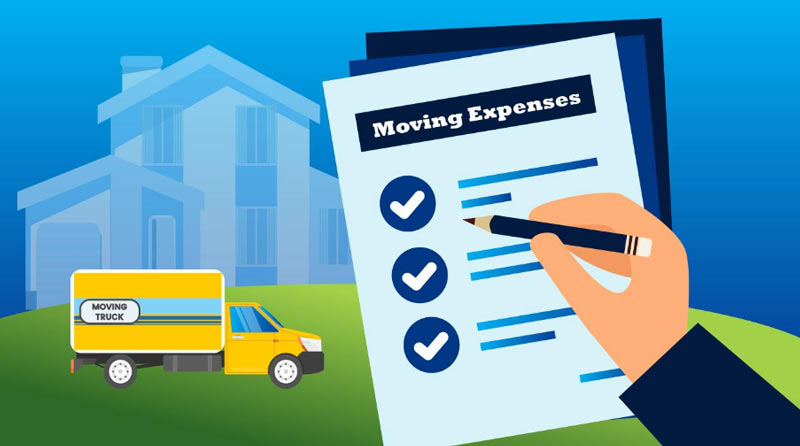How to File Form 3903: Moving Expenses
Aug 19, 2023 By Kelly Walker
Relocating for work-related reasons can be both an exciting and stressful experience. Fortunately, Form 3903 allows eligible individuals to claim deductions for qualifying relocation expenditures from the IRS. This tax form is essential for individuals or families seeking to lower their tax bill and recoup part of their job-related moving expenditures.
Form 3903 - Moving Expenses: What is it?
Form 3903, officially titled "Moving Expenses," is a specialized tax form provided by the IRS to taxpayers in the United States. The form is designed to help taxpayers claim deductions for qualified moving expenses when they relocate for work-related reasons. By completing and filing Form 3903, eligible individuals can reduce their federal income tax liability and recoup some expenses incurred during the move.
Qualified Moving Expenses: What Can Be Deducted?

Form 3903 allows taxpayers to claim various moving expenses, including:
Transportation
This includes the cost of moving household goods and personal effects to the new location. Taxpayers can deduct expenses from moving their belongings through their vehicle or hiring a moving company.
Travel
The taxpayer can claim the cost of transportation for themselves and household members to the new location. This includes airfare, train tickets, or other travel expenses related to the move.
Lodging
Expenses for temporary lodging during the move can be deducted. This includes costs for hotel stays or short-term rentals to facilitate the relocation process.
Storage
The cost of storing household goods and personal effects for up to 30 consecutive days after the move is also eligible for deduction. This is particularly helpful if the taxpayer's new residence is still being prepared for occupancy.
Expenses Not Covered by Form 3903
While Form 3903 allows taxpayers to claim various moving expenses, certain costs are not eligible for deduction. These include:
Meals
The IRS does not allow deductions for the cost of meals during the move. Taxpayers should know these expenses cannot be included in their Form 3903 claim.
House Hunting
Expenses related to house hunting or temporary living arrangements at the new location are not covered by Form 3903. Only expenses directly related to the move itself can be claimed.
Return Trips
Any costs for return trips to the old location after the move are not eligible for deduction. Only expenses incurred during the actual relocation can be included in the claim.
How to File Form 3903: Moving Expenses?
 Filing Form 3903 for moving expenses is a straightforward process that requires careful organization and attention to detail. Here's a step-by-step guide on how to file Form 3903:
Filing Form 3903 for moving expenses is a straightforward process that requires careful organization and attention to detail. Here's a step-by-step guide on how to file Form 3903:
Step 1: Determine Eligibility
Before proceeding with Form 3903, ensure that you meet the eligibility criteria for claiming moving expenses:
Distance Test
The new workplace or job location must be at least 50 miles farther from your previous home than your previous workplace. If you did not have a previous workplace, the new workplace must be at least 50 miles from your old home.
Time Test
You must work full-time for 39 weeks in the 12 months after moving. Self-employed people must work full-time for 39 weeks in the first year and 78 weeks in the first 24 months after moving.
Work-Related
The move must be closely related to starting work at a new or changing your existing job location.
Step 2: Obtain Form 3903
Visit the official IRS website and search for "Form 3903" in the search bar. Download the current form version or obtain a printed copy from a local IRS office.
Step 3: Gather Documentation
Gather all relevant documentation related to your qualified moving expenses. This includes receipts, invoices, and other supporting documents proving the expenses were directly related to the move. Keep these documents organized and ready for reference when completing the form.
Step 4: Complete Section A (Taxpayer Information)
Begin completing Form 3903 by filling out Section A, which requires your basic information. Provide your name, address, Social Security number, and filing status. If you are married and filing jointly, include your spouse's information.
Step 5: Complete Section B (Workplace Information)
In Section B, you will enter details about your old and new workplaces or job locations. This includes the addresses of both locations, the dates of employment, and the distance between your old and new homes and workplaces. Accurate and specific information is crucial to validate your eligibility for the moving expense deduction.
Step 6: Calculate Qualified Expenses
Next, calculate your qualified moving expenses. Total the costs related to transportation, travel, lodging, and storage that meet the criteria for eligibility. Keep detailed records of each expense category to ensure accurate calculations.
Step 7: Complete Section C (Qualified Moving Expenses)
In Section C, enter the calculated amount of your qualified moving expenses and any reimbursements received. The form calculates net qualifying expenditures, the difference between total qualified expenses and reimbursements.
Step 8: Calculate the Deduction
After completing Section C, you can calculate the deductible moving expenses by subtracting the total reimbursements from the total qualified expenses. The resulting amount represents the eligible moving expenses you can deduct from your taxable income.
Step 9: Transfer Deduction to Tax Return
Transfer the resulting deductible moving expenses to the appropriate section of your federal income tax return. Attach Form 3903 to a paper return according to IRS guidelines. Tax preparation software will walk you through this procedure and immediately include the deduction to your tax return.
Step 10: Keep Records
It is essential to keep a copy of Form 3903 and all supporting documents for at least three years after filing your tax return. An IRS audit may require these papers to substantiate your moving charges.
Conclusion
Form 3903 is a valuable resource for taxpayers in the United States who have incurred qualified moving expenses related to work-related relocations. Eligible persons can decrease their tax obligation and recoup certain job-related move costs by claiming deductions on this form. To comply with IRS laws and maximize tax benefits, you must understand eligibility, qualifying moving expenditures, and Form 3903. As with any tax matter, seeking professional tax advice or utilizing reputable tax preparation software to ensure accuracy and compliance with current tax regulations is advisable.








